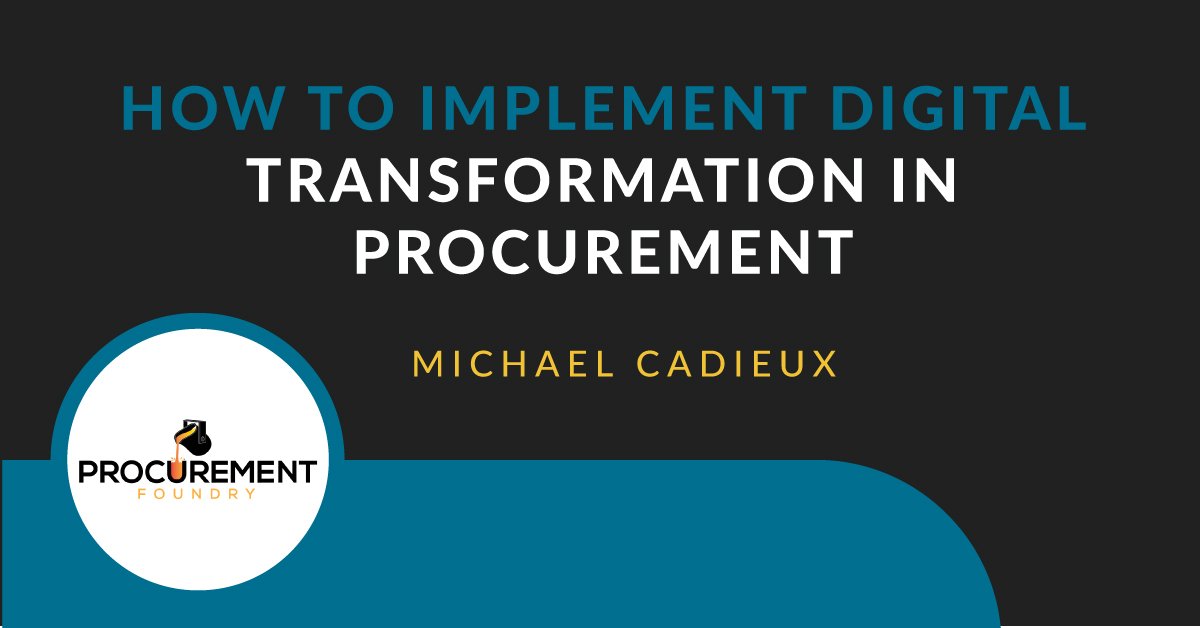Maximizing Savings Opportunities and Procurement's Strategic Value for CPOs
Saving money is not always about pinching pennies: advanced and data-driven insights enable you to identify real cost-saving opportunities, negotiate...
2 min read
![]() Michael Cadieux
:
1/17/22 12:00 AM
Michael Cadieux
:
1/17/22 12:00 AM

Here’s the scenario: Well-established company, BT (British Telecommunications), needed to update their procurement department to the digital age. So they did—an endeavor that was met with great success. Many companies have been asking how to implement digital transformation in procurement, and BT found a way.
At the recent FORGE Blue Sky conference, representatives of BT explained how they transformed their current state by accelerating their digital transformation using tools and an improved process. Adam Brown, the Senior Transformation Manager at BT, walked attendees through the steps the company took to bring their digital transformation to the next level.
There are many good reasons why organizations need to focus on digital transformation in procurement. The following issues highlight why digital transformation should be a priority for your organization.
The good news is that digital transformation creates a system for gathering the right data and incorporating it fully for business intelligence at a higher level. It allows different functional units within an organization to translate raw data into insights across various touchpoints.
So, now that you realize the extreme importance of digital transformation in procurement, what’s next?
The first step is to make your mission statement. After all, everyone needs clear and specific goals.
BT’s “Digital Garage” set their mission: “to accelerate the digitization of procurement as rapidly possible to digitize as deeply as possible, and not just in a traditional iterative approach to a digital transformation, but to really leapfrog where the state of the art was, to not just deploy what was good then and good at that point in time, but where things would be in a few years.”
Next, it is important to identify all the areas that need digital transformation and why. At BT, Adam’s team categorized these areas into “buckets,” allowing them to further sort their needs into various, more specific categories. According to Adam, he had buckets of potential solutions, requirements, and a bucket full of places that needed solving. “It was just a case of putting them together and you could get to the sweet spots, and then a prioritized order of what needed to be done,” he said.
Follow up your categorization by mapping your end-to-end process. Then, invite your stakeholders and teammates into the discussion to identify pinpoints, bottlenecks, and process problems. And while doing so, be as specific as possible. After discussing it in as much detail as possible, log this data.
Finally, after compiling all this data and information, you can start to look at all possible solutions.
You can take a lesson from the playbook of Adam’s team, who used resources such as Kearney and Spend Matters to look at new procurement solutions. Next, they started to implement the tools and group them into toolkits for different functions in their organization (the orchestration of these tools will be a living, ongoing process moving forward as the market continues to evolve).
Lastly, they educated. When a new tool is added, education is a huge part of the puzzle fitting together and flowing, and as such, it needs to be a priority.
We can’t stress enough that continuous collaboration is paramount throughout this process, and it will always be necessary with any high-performing team.
To learn more about the FORGE Blue Sky Conference, check out our article, where Procurement Foundry’s Claire Barnes gives us the inside scoop.

Saving money is not always about pinching pennies: advanced and data-driven insights enable you to identify real cost-saving opportunities, negotiate...

The topic of our recent roundtable discussion with a dozen Procurement Foundry community members—exploring potential flaws in procurement incentive...

Every 30 days or so, I get the same alert on my phone—“Your electricity bill is available for viewing.” I take a quick look, make sure nothing seems...